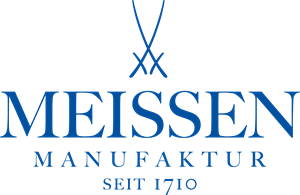


Meissen porcelain (German: Meißener Porzellan) is the first European porcelain, with its history dating back to 1710 in Meissen, near Dresden. The invention of European porcelain is credited to Ehrenfried Walther von Tschirnhaus and his student Johann Friedrich Böttger, who continued the development of production after Tschirnhaus's death. Thanks to the initiative of Augustus II the Strong, the Royal-Polish and Electoral-Saxon Porcelain Manufactory was founded, marked by crossed swords—the symbol of the Saxon electors—painted in cobalt under the glaze. Especially valued were pieces with the monograms of Augustus II and Augustus III, which served as royal gifts.
The years 1720–1733, known as the painting period, brought the manufactory fame due to chinoiserie decorations by Johann Gregor Höroldt. Its greatest flourishing occurred between 1733 and 1756, when Johann Joachim Kändler designed figurines and allegorical scenes. Despite a crisis brought on by the Seven Years' War, the manufactory rebuilt its reputation and underwent modernization in the 19th century, adapting production to new industrial techniques.
Over the centuries, Meissen porcelain has reflected current art styles, from Art Nouveau to classicism, with renowned designers like Henry van de Velde introducing innovative forms. Today, Staatliche Porzellan-Manufaktur Meissen GmbH continues this tradition, creating luxury items cherished worldwide as symbols of European artisanal craftsmanship.